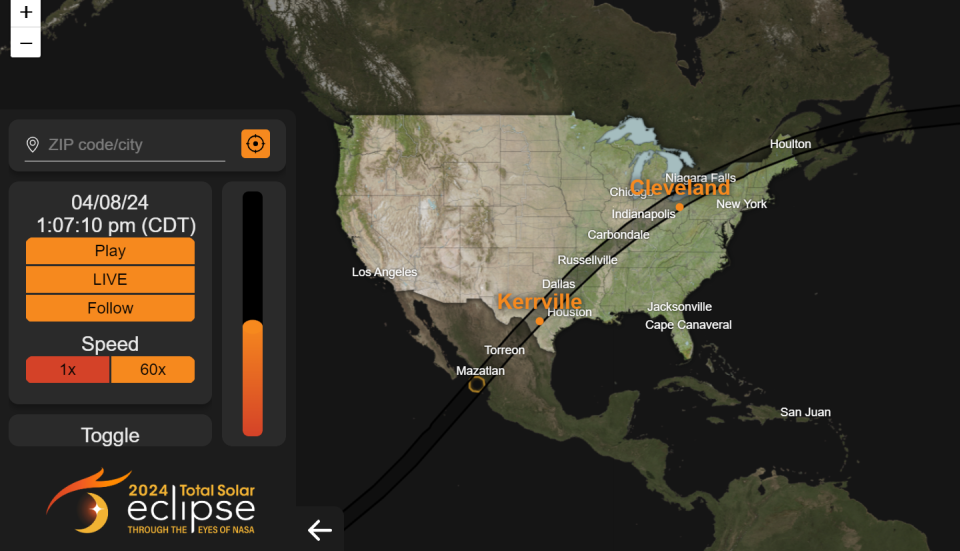Will Indy's eclipse make the clouds disappear? Here's what we know
Weather forecasts for Indiana during the solar eclipse are mixed, with historic data showing a likelihood of cloud cover while a long-range forecast showed clearer skies. A new study, however, shows that some clouds can clear up during an eclipse.
A group of researchers out of the Netherlands wrote the study that was published in Nature’s Communications Earth and Environment. They found that even when the sun is obscured 15%, clouds can start to disappear.
Will an eclipse clear the clouds?
The researchers, working out of the Netherlands, used satellite data to measure clouds during three solar eclipses between 2005 and 2016. They found that as the land cools during an eclipse, shallow cumulus clouds start to disappear.
Cumulus clouds are the individual cotton-ball clouds that show up on days with fair weather.
An earlier study, conducted in 1999, says that falling temperatures due to the eclipse begin clearing out clouds about 30 minutes before the beginning of totality.
Not all the clouds in the sky will disappear during an eclipse, unfortunately, as both studies suggest that mid- and high-level clouds remain.
What does historic weather data show for the eclipse?
IndyStar analyzed historic weather data earlier this year and found disappointing news when it comes to the state’s cloud cover on April 8.
The cloud cover data between 2000-2023 fails to mention the word "sunny" even once, with the best observation being "fair."
NWS defines a "fair" sky as having less than 3/8ths cloud cover. "Partly cloudy" means between 3/8ths and 5/8ths cloud cover. "Mostly cloudy" is when 6/8 to 7/8 of the sky is covered with opaque clouds. And "cloudy" means 7/8ths or more of the sky is obscured.
The breakdown of recent April 8 cloud-cover observations looks like this:
Fair — 5 days
Partly cloudy — 3 days
Mostly cloudy — 6 days
Cloudy — 10 days
What was the long-range forecast?
Long-range meteorologists at AccuWeather released an early viewing forecast earlier this month and came to a different conclusion for Indiana than what the historic data shows.
The group found that areas of the Ohio Valley and Great Lakes region will be some of the best places for favorable eclipse weather.
Paul Pastelok, with AccuWeather, said multiple weather factors can affect the first half of April, changing the outlooks.
"There is a good possibility that a cold front will be moving across central and eastern U.S. near this time of the eclipse," Pastelok said in a release. “The exact location of this front could be the difference between a cloud-filled and a cloud-free sky.”

Total solar eclipse 2024: Ticketed events, parties in Central Indiana where you can see the April 8 solar eclipse
What is Indianapolis’ National Weather Service saying?
The NWS in Indianapolis issued a series of climatology maps looking at cloud cover between April 1-15 from 1979-2022.
Its findings were less optimistic and show Indianapolis, and much of Indiana, gets about 60-70% cloud cover on average during April 8.
While the outlook isn’t great, experiencing the totality of a total solar eclipse even under cloud dover, is impressive.
Organizations and businesses across the state are planning many activities — but plan ahead, because traffic and parking will be a mess.
Karl Schneider is an IndyStar environment reporter. You can reach him at karl.schneider@indystar.com. Follow him on Twitter @karlstartswithk
IndyStar's environmental reporting project is made possible through the generous support of the nonprofit Nina Mason Pulliam Charitable Trust.
This article originally appeared on Indianapolis Star: Can an eclipse create clear skies? Here's what we know

